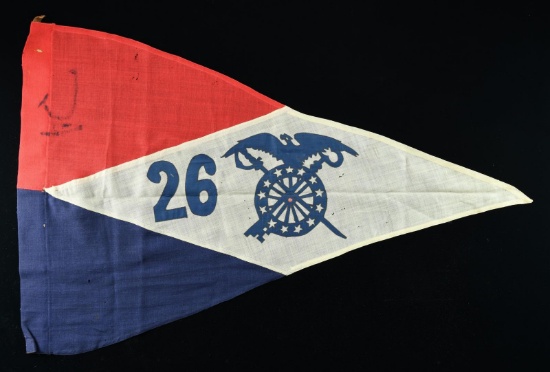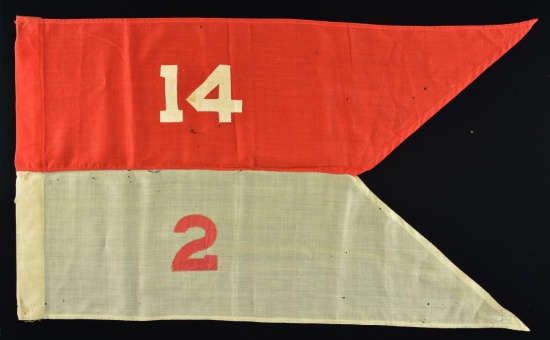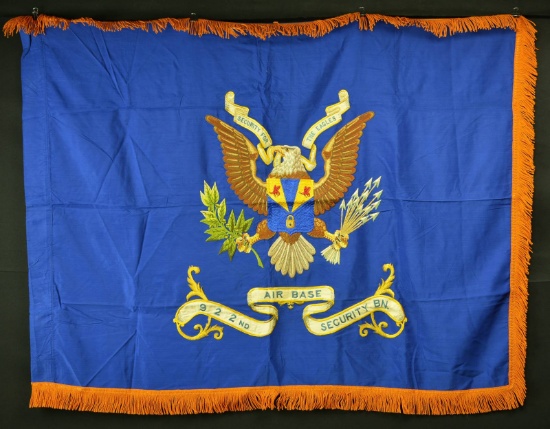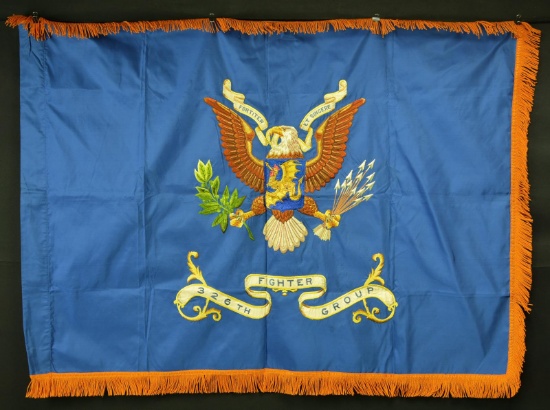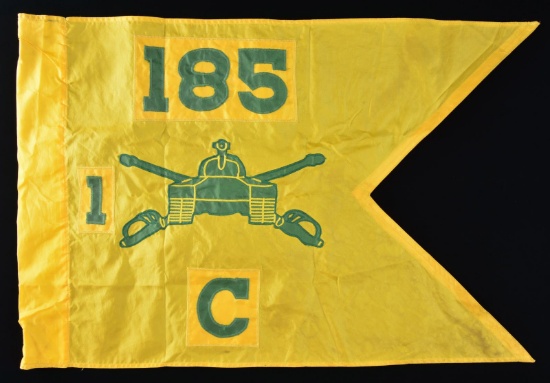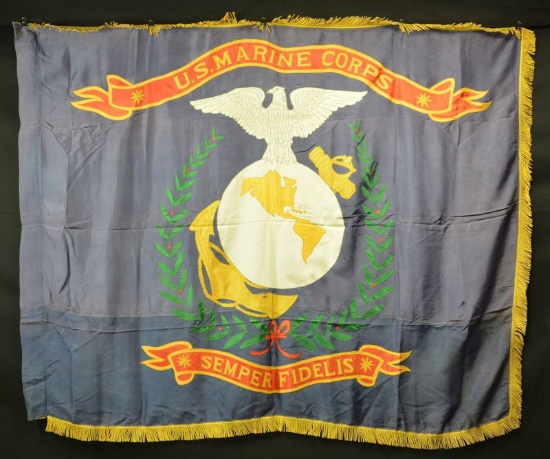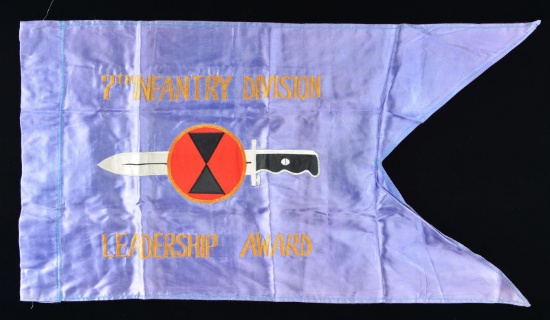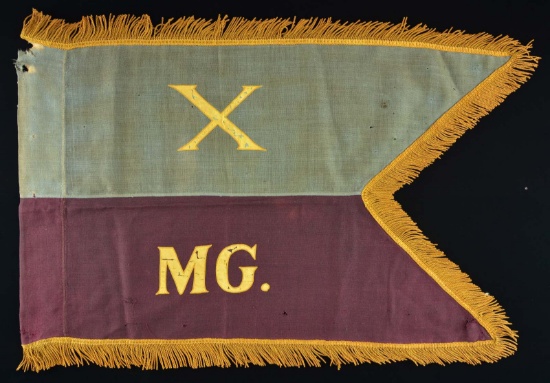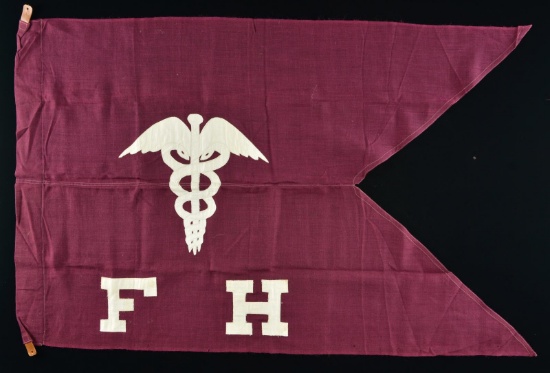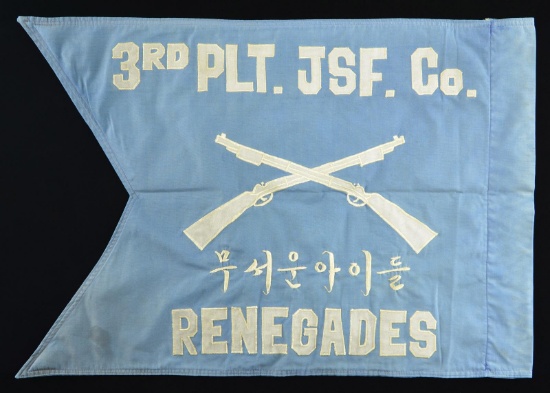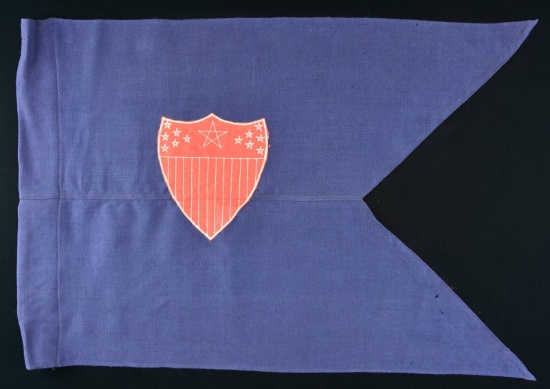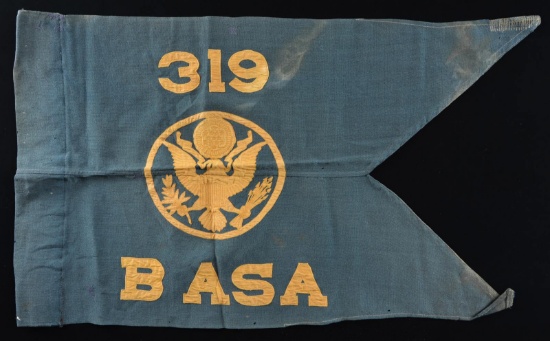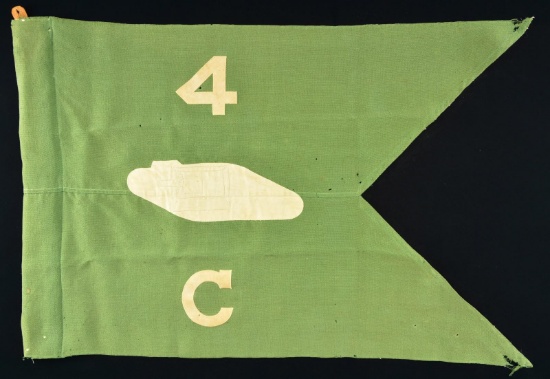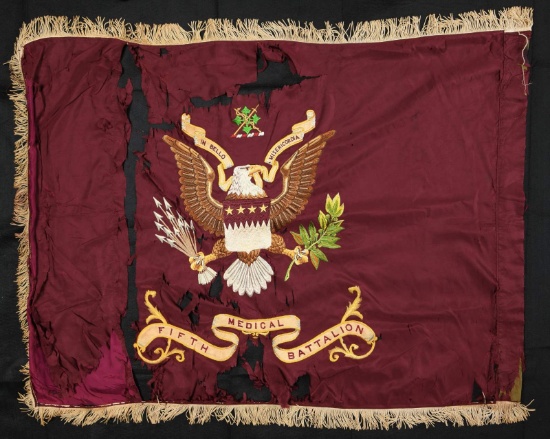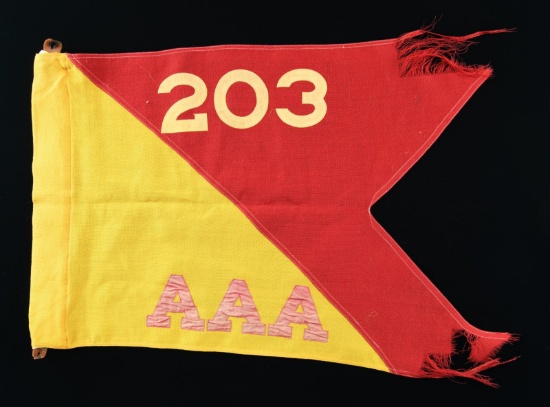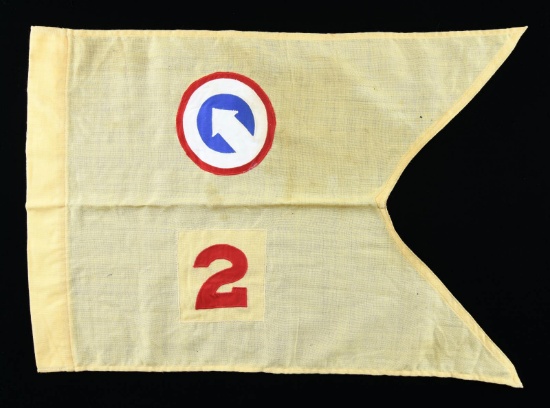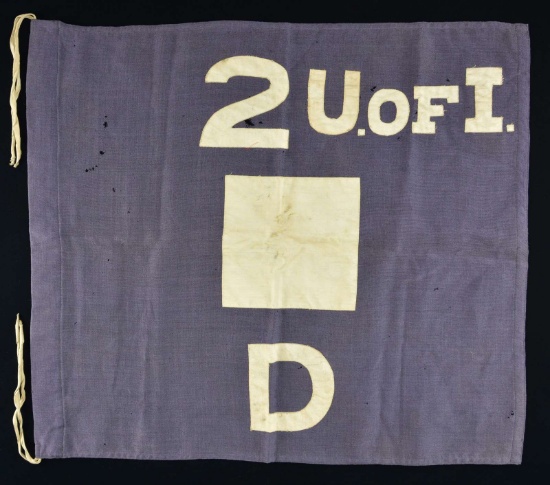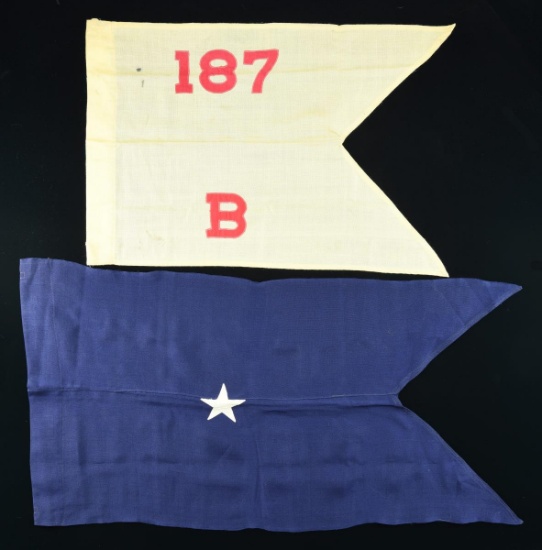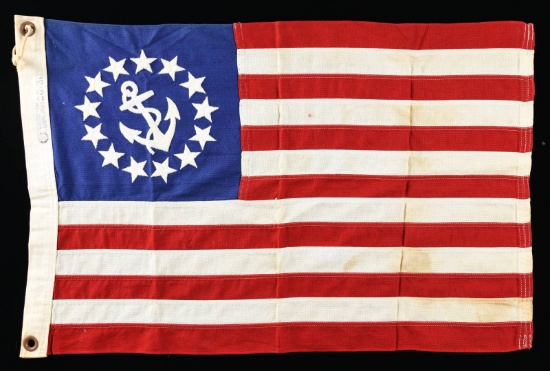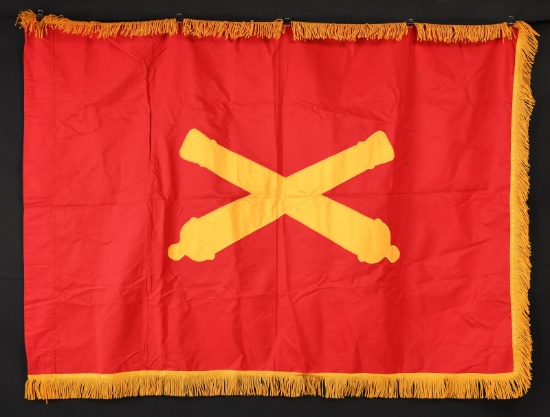Special Terms
Terms & Conditions
Poulin Auction Firearms Buyer Terms & Conditions - Please Read
1. DESCRIPTIONS: We have attempted to make a consistent effort in cataloging and correctly describing the property to be sold. Should the need arise, we will make verbal corrections and provide additional information at the time of sale. A correction to the printed material announced by the auctioneer during the auction takes precedence over printed descriptions.
The printed catalog descriptions carry a limited guarantee to protect you against major discrepancies that would have a major effect upon the value of the item. Under no circumstances do we guarantee against anything less than a major discrepancy that would have less than a major effect upon value. Several examples: If we call a Colt a Winchester. Or if we state the firearm is in original finish and it has been re-blued. Percent estimate of finish is an opinion and may vary from individual to individual, so this would not qualify.
Not every item included in this auction has been completely disassembled to verify internal component's origins. However, if we have made the statement that the item is "all matching" or "internal numbers match", we guarantee that this information is accurate. If an item's description does not list the status of the internal components, we do not guarantee that they are original, matching or that they are period. If you would like additional information concerning internal components of a firearm that does not mention the internal components in the description, please contact us at 207-453-2114 and our consultants will be happy to assist you at their earliest availability.
This limited guarantee is limited to what you paid for the item from us and not what you expect to get if you had sold it.
Note: It is the sole responsibility of the purchaser to satisfy themselves on the age, authenticity, condition, description and value of each lot before bidding. This includes all bidders whether they be here at the live auction, absentee, phone or internet bidders.
1A. FOR PURCHASERS WHO HAVE ITEMS SHIPPED TO THEM: Should there be a major discrepancy as listed in Item 1 above, a refund may be arranged and the buyer would need to make arrangements for the return within 30 business days of the auction date. Because consignor's payments are sent out on the 35th business day after the auction, ANY REQUESTS MADE FOR A REFUND AFTER 30 BUSINESS DAYS OF THE AUCTION WILL NOT BE CONSIDERED. Please pay promptly to ensure that you have time to inspect your purchases. If we do not have all of your payment, paperwork or credit card information for the items to be shipped by the 10th business day after the auction you could be jeopardizing your ability to qualify for a refund. Shipments can take 1-2 weeks from the time we receive the entirety of your required payment and paperwork to process and ship due to the volume of clientele that we are processing after the auction. We are not responsible for any liability with the descriptions if we have not received everything that we need to complete the transaction in time for the items to be shipped to you. NO PARTIAL REFUNDS.
1B. FOR LIVE BIDDERS: It is expected that you have examined the items before you purchased them and that as you pick them up, you will re-examine them one last time. If there is a problem regarding condition, it is expected that you would notify us immediately before leaving the auction facility. Also, please check to make sure all components to your lots are there. All possibility of a refund is null and void once you have left our facility with the item(s).
2. WE AT POULIN ANTIQUES & AUCTIONS, INC. WOULD LIKE TO MAKE YOUR BIDDING EXPERIENCE AS PLEASANT AS POSSIBLE: Whether you are bidding live, absentee or by phone, we ask that before you bid in any manner that you satisfy all your questions, so that you may feel confident in placing your bids with us. All the items we offer have been pre-owned, loved, handled and used. Keeping this in mind, we suggest you call us with your inquiries. Please call prior to the first day of the auction, at least 48 hours or sooner, to get any questions and/or damage reports available on the items that interest you.
3. THE AUCTIONEER IS THE SOLE DETERMINANT AS TO WHO IS THE SUCCESSFUL BIDDER: At the Auctioneer's discretion he may re-offer and resell the article if a dispute arises. Auctioneer's sale recording shall be conclusive as to who was the successful purchaser and the purchase price. If there is no apparent interest in an item (1/3 of catalog low estimate) or an appreciable opening bid, (when no catalog is printed), the item will be passed from the block by the Auctioneer and will not be re-offered again until possibly a later date.
4. 5.5% SALES TAX must be charged to all successful bidders.
* Maine residents who do not present a valid ANNUAL RESALE CERTIFICATE at the time of registration will have to pay the 5.5% sales tax. NO EXCEPTIONS.
* Under Maine law, items to be shipped within Maine will have the tax applied.
* If you reside in the state of Maine, but maintain an out of state tax number, you must pay sales tax. This is Maine law.
* Out of State residents. If you are not a Maine resident, we require a copy of your resale certificate. Due to the recent Supreme Court ruling, items shipped to some out of state residents may be charged sales tax, if your state requires our company to collect the recipient's state sales tax.
5. BUYERS PREMIUM OF 17.5% will be applied to all property sold to be paid by the buyer as part of the purchase price and is therefore subject to applicable state sales tax.
1. A 3.5% Credit Card processing fee is applicable should you decide to pay by credit card.
5A. PROXIBID, INVALUABLE, AUCTION ZIP, & ICOLLECTOR BIDDERS: These are internet bidding services that are provided by separate companies that hosts our auctions live. They charge us a significant fee to upload to their platforms. They charge 3% to the buyer who utilizes their services. This amount is added into your Buyers Premium on your invoice.
6. RESERVES: Occasionally an item may carry a conservative reserve. Therefore the auctioneer retains the right to bid on behalf of the owner. We will tell you if an item carries a reserve should you inquire.
6A. AUCTION STAFF MAY BID COMPETITIVELY ON ITEM OFFERED FOR THEIR OWN PURPOSES.
7. NAMES OF CONSIGNORS ARE CONSIDERED CONFIDENTIAL and will not be given out unless we have prior approval from the consignor to do so or if the auctioneer deems necessary.
8. PAYMENT: All items are to be paid for in United States American Funds. We accept Cash, pre-approved checks, Visa, MC, American Express, Discover & wire transfers. All items must be paid for in full before being removed from our facility. All fees associated with the cost of a wire transfer or bank check are those of the purchaser.
* Must have valid driver's license when paying by charge cards & checks.
* Checks are to be pre-approved by auctioneer prior to the auction (at least 2 business days before auction, NOT the day of the auction). A letter of reference from your bank is recommended to those who have never done business with us before. The auctioneer reserves the right to hold merchandise purchased by checks that have not been pre-approved until we can see that the check has cleared the bank. It is our policy to hold merchandise on all first time buyers, due to our bank's recommendation of 10 days, until the check has cleared the bank. (This enables the check to clear the bank and if it does not, then it gives them the time to notify us via mail).
* There will be a $25 fee charged for all returned checks.
* Third party checks are not accepted.
Note: Delay in payment, means delay in shipment to you. Delay in shipment to you could mean you lose all possibility of a return, so please make a prompt payment. The speediest forms of payments are credit cards or bank checks. Personal or Business checks from first time buyers will hold the shipment up for 10 business days until checks have cleared the bank. This could jeopardize the warranties of the descriptions if the shipment exceeds 18 business days.
9. OUT OF COUNTRY BUYERS:
9A. Payment must be in the form of either Wire transfers or Checks (made out in United States funds). Credit cards are only accepted for the shipping process. All fees associated with the use of a wire transfer are the responsibility of the purchaser. This includes the $25 fee that Poulin Antiques & Auctions, Inc. is charged by their bank for the international wire transfer.
9B. All firearms (this includes all antiques, curios or modern firearms), plus edged weapons and any item that has a portion of an animal (ivory, etc..) must go through either an exporter or another FFL dealer that supplies this service. We, Poulin Antiques & Auctions, Inc., will not ship any of these items out of the country without the use of an exporter.
10. AGENTS:
NON-FIREARMS AGENT: If you are registering or executing a bid for someone else, please bear in mind that you are responsible for the settlement of that account with us regardless of whether the person you're executing or registering for pays you or not. We do not accept third party checks.
FIREARMS AGENT: You must have an agents letter registered with us before bidding on behalf of someone else on a Modern or Curio firearm.
According to the ATF lawyer in Boston – If you are representing some other FFL as an agent you must have the following to qualify:
1) You must have a letter from the FFL Holder you are representing.
2) Your agent letter must be on the company's letterhead.
3) Must be typed.
4) Must be signed by the FFL Holder.
5) Must be accompanied by a copy of the FFL.
6) Must state that you are an employee for the FFL Holder.
7) Must be dated.
Please Note: If you do not have a "completed" letter with ALL of the above requirements you will not be able to represent another FFL Holder in this capacity.
11. TITLE: A title passes upon the fall of the auctioneer's hammer or when announced as sold by the auctioneer.
* The auctioneer is the sole determinant as to who is the successful winning bidder.
* It is then the responsibility of the buyer to make full payment prior to removing the items from the premises.
* It is both the buyer's risk and expense for removal and must be made at the conclusion of the sale unless other arrangements are made with Poulins Antiques & Auctions, Inc. All items to be packaged by the purchaser, unless the items are to be shipped.
* If an item(s) cannot be removed on the sale date, storage may be arranged for an agreed amount of time. A fee of $25 a month – per item will be charged for any item(s) being left in our facility longer than 30 days from auction date. ALL ITEM(S) left will be at the purchaser's risk. Poulin Antiques & Auctions, Inc. is not liable for any damage or loss occurring during storage on behalf of the purchaser. Items will not be released to the purchaser until all storage fees and any other balance due to Poulin Antiques & Auctions, Inc. is paid in full. Fees continue until the balance has been paid in full.
* IF CONTACT CANNOT BE MADE WITH THE BUYER TO MAKE ARRANGEMENTS FOR PAYMENT AND SHIPPING WITHIN 18 BUSINESS DAYS AFTER THE AUCTION THE AUCTIONEER RESERVES THE RIGHT TO OFFER THE ITEM TO THE UNDERBIDDER.
12. THE BUYER IS RESPONSIBLE TO HAVE FULL KNOWLEDGE AS TO WHETHER THE ITEM THEY ARE BIDDING ON IS LEGAL FOR THEM TO POSSESS OR IMPORT INTO THEIR RESIDENT STATE OR COUNTRY: If a buyer purchases an item that is either illegal to possess in their resident state or will not be cleared through customs, the buyer is responsible for the purchase and will not be issued a refund. The item determined illegal in their resident state or country will be offered in the next auction and a seller's commission and restocking fee will be deducted from the proceeds of the sale of the item(s) resold on behalf of the purchaser.
NOTE: Poulin Antiques & Auctions, Inc. will not change the name or amount on an invoice, or alter any paperwork in any manner for any item.
13. WITHDRAWALS: We reserve the right to withdraw any property before the sale and shall have no liability for such withdrawal.
14. ABSENTEE & PHONE BIDS ARE ACCEPTED AT POULIN'S: Absentee bidding is a free service we provide to our customers. Bidding on items shows that you agree with all terms & conditions of bidding.
* We accept bids from International Countries, with the exception of sanctioned Countries.
* We accept Absentee & Phone bids with the condition that bids are written clearly and that a lot number & brief description of each lot is written out. (i.e. : Lot 101 – Colt Woodsman Revolver – $850.00). It is necessary that this format is followed to be sure that we can check for accidental errors that are made by the absentee bidders with an incorrectly written lot number resulting in the purchase or bidding on an incorrect lot. PLEASE NOTE: IF A BIDDER MISIDENTIFIES A LOT NUMBER OR ITEM THAT THEY ARE INTERESTED IN BIDDING ON RESULTING IN THE PURCHASE OF THE LOT(S) IT IS THE RESPONSIBILITY OF THE BUYER TO PAY FOR THE PURCHASE EVEN THOUGH HE MADE AN ERROR WHEN BIDDING ON THE LOT(S). Poulin Antiques & Auctions, Inc. is not responsible for these errors with absentee bids.
* Poulin Antiques & Auctions, Inc. shall not be held responsible for any failure to properly execute an absentee or phone bid whether it be due to equipment failure, lack of description on bid form, clerical error, loss of connection or failure to hear or understand the bidder's directions, etc..
* Absentee and Phone bidders must review their bids for correctness prior to submitting their bid(s). If you supply an email address, when the bids are processed here, you will then be sent a copy of your processed bids. Please review this and determine if any corrections should be made. Notify us immediately with any corrections or changes you may have. Poulin Antiques & Auctions, Inc. will not be responsible for errors in absentee bids.
* If you do not receive confirmation by email/phone within 24 hours of submitting your bids please, contact our office. We would hate to have you miss your items because we did not receive your bids.
* At times we may make a verbal correction from the block at the time of sale. In this case absentee bids left on an item will be considered void unless we can confer with the bidder prior to the item being sold.
* All absentee and phone bids must be accompanied by a credit card in order to secure bids.
* Invoices will be emailed out within 24 hours of the end of the final auction day.
* NOTE: If for any reason the invoice and any shipping and handling fees are not paid within 18 business days of the auction date the credit card will be charged the full purchase amount due to Poulin Antiques & Auctions, Inc. By placing absentee bids, phone bids, internet bids or registering for live bidding in person, you are authorizing Poulin Antiques & Auctions, Inc. to charge the card provided for any purchases made and any fees that are associated with the purchase including but not limited to shipping, handling, insurance & storage.
Disclaimer: Any advice or opinions provided by Poulin Antiques & Auctions, Inc. or its employees are given strictly as a courtesy and are not a warranty of condition, authenticity, age, attribution or description of said property.
14A. ABSENTEE BIDDING:
* Absentee bids must be in by the start of the auction. Please try to get them in at least by 5:00 PM EST the day prior to auction. If you wait and place your bids just moments prior to the start of the auction we do not guarantee that your bids will get placed.
* We do not accept +1 bids.
* We accept bids that end in 0 or 5 only. Bids that are placed in amounts such as $501.00 or $500.01 will be lowered to the closest amount ending in 0 or 5. We will never raise a bid higher without permission from the bidder.* Bid advances are taken at the discretion of the auctioneer. Miniscule advances will not be accepted and will be rounded down. Typical advances are 5-10% of the current bid level.
* A staff member will competitively bid for the absentee bidder. We let the audience start the bidding unless there is more than one bid at the book. If there is more than one bid then the bidding will be started above the under bidders. Example: We have a bid for $1500 and one at $3000. The bidding will then start at $1600 and will then be bid competitively to the limit the absentee bidder set. For this reason it is possible that an absentee bidder may get their item for much less than what they bid. In the case of two bids being the same amount the bidding will start at that amount and the winner shall be the person who left the bid first. * Please note: Being the first ABSENTEE BIDDER does not guarantee that you will be the winning bidder if the floor, phone or internet bidding ties during the live auction. The auctioneer is the sole determinant as to who is the successful bidder. The date and time that you submit a bid only determines the winning bidder between two absentee bidders with the same amount participating through the same method or platform.
* We do our best to execute all bids correctly however, errors are made at times. In the event of an error of omission or failure to properly execute a bid, the auctioneer shall not be held liable.
* All left bids are considered confidential, and as such the names of the absentee bidders and the bid amounts will not be given out.
* Please call prior (at least 48 hours) to the 1st day of the auction to get any information or inquiry reports pertaining to the items.
* We will not accept a bid that does not have an amount associated with it. We have had people on occasion tell us to buy the lot for them no matter what it goes for. We suggest that you place a bid substantially higher than the estimate and what you would be comfortable in paying for it. We do not want to be responsible for your personal choice of amount.
14B. PHONE BIDDING:
*Phone bidding is allowed, when available, only under pre-arranged conditions determined by and discussed with the auctioneer prior to the auction.
* All requests for phone bidding should be made before 5:00 PM EST, prior to the day of the Auction to be sure we can accommodate you within the phone schedule.
* After this point we will only accept absentee bids.
* All bidding by telephone is solely at the risk of the bidder.
* We reserve the right to reject bids on items that we feel may be too difficult to explain by phone.
* To be a Phone Bidder you must be willing to start an item for 1/2 of the low catalog estimate or $100.00, whichever is the greater.
* Please note: The employee calling you may be calling from a personal cell phone not belonging to Poulins. Because of this it may not show on your caller ID as Poulin Antiques & Auctions, Inc. Please do not attempt to contact the telephone line that has contacted you for phone bidding services, they will not answer. If you have any questions during and after the auction, please contact 207-453-2114 to reach an office staff member.
* Also Please Note: Please call in advance (at least 48 hours) of the auction if you need conditions or descriptions of the items. Staff members who are calling to handle your phone bids will not be able to answer questions pertaining to condition or description during the auction.
* The staff member that will be on the phone with you during the auction will be very busy concentrating on the current lot, so as not to miss your item that you are interested in. EMPLOYEES ARE DISCOURAGED FROM DISCUSSIONS DURING THIS TIME SO THAT THEY DO NOT MISS THE ITEM YOU ARE INTERESTED IN. Any discussion that takes place can and has interfered with customers bidding in the past. Our employees will be polite and talk to you, but please keep in mind that this could cause them to lose track of your item and consequently miss your bid. We would not want that to happen, so we have asked our employees to keep all conversations extremely brief.
* If you would like to add another lot to your bidding, we will TRY to accommodate you but regrettably may not be able to because of other bids that are already arranged in our system and because of time constraints.
* Phone Bidding Procedure: An appointed staff member will confidentially bid for the Phone bidder. An employee will identify themselves to you and explain that the Phone bidding will commence when the live floor bidding starts to slow a bit. It is simply moving too quickly to ask for an amount when bids are flying. They will then tell you the amount the auctioneer is looking for. Please answer quickly, loudly & clearly either YES or NO. It can be difficult to hear over the auctioneer so speak loudly. Once done the employee should then Thank you for participating and explain that someone will be calling, emailing or mailing you an invoice after all the days of the auction is done. They will then exit fairly quickly unless you have another bid that will take place within the next 5 items. We apologize if the quick exit seems to insult you in any way, but the employee will be responsible for other phone calls and also will not know the answers to payment, shipping or who will be handling your other bids if any.
* Cover Me Bids: To help ensure that you don't miss out on an object, some people like to place a cover me bid at the time they make phone bid arrangements. No system is perfect and sometimes it is impossible, for one reason or another to get through to the client on the telephone. A "Cover Me Bid" is a bid left only with your phone agent. If he/she cannot get through to you on the phone, they will bid up to that amount on your behalf. The only way they execute this bid is if they cannot get through to you.
* Stop Point Bids: A staff member will contact you within 3-5 items prior to the item that you are interested in bidding on. We ask that you consider a "Stop Point". This is a designated amount you wish the staff member to bid up to on this item for you. Because of the noise level that occurs during an auction, this creates less confusion on the phones for us and our customers. Once they reach this "Stop Point" amount they will then query you for the next desired amount that the auctioneer is asking for. You can then bid higher or stop if you so desire.
15. INTERNET BIDDING: Live internet bidding is available with Auctionzip.com, Invaluable.com, Proxibid.com, and iCollector. These are separate companies that are not owned by Poulin Antiques & Auctions, Inc.
* You must submit a credit card with them when signing up to bid. These card numbers are not supplied to us. You will have to contact our office if successful and submit your credit card information to us.
* These are bidding services that are provided by separate companies that host our auctions live. They charge 3% to the buyer who utilizes their services. This charge will be added to your invoice Buyers Premium.
* Review all lots that interest you at least 24 hours prior to the auction. Sometimes we find a "change" in condition or listing. We cannot notify each person individually, so what we do is remove the photo and place a statement "No bids accepted online. Please call office to place bids."
* Please Note: These online platforms tell you when you are the highest absentee bidder. This is only within their platform. AuctionZip, Invaluable, Proxibid, & iCollector do not share bid information and so they do not compare your bids with each other or with bids that we have taken in. If they tell you that you are the highest bidder that is only within their platform, not others.
* IMPORTANT: ALL LIVE INTERNET BIDDERS MUST READ THIS DISCLAIMER: Live internet bidding is a fast paced process and can be very fun. However, problems can arise during the process that can result in a purchase or bid being accidently enacted by the buyer or some entity. This could be that your internet/computer speed or a lag in the connection may cause your computer to slow down and then all of a sudden the computer may catch back up, causing the bidding to "jump" to a level that you are unprepared to bid. It could also be that your cat, dog, 2 year old or Martians from a far distant planet in a galaxy far, far away enacted a bid that you were not prepared to place. No matter the reason that may come up it is the responsibility of the bidder to pay for the purchase regardless of the reason. The bidder must log in with their personal log information and in doing so understands the risks that they are taking by participating in live internet bidding and agrees to pay for any and all purchases. Any bids placed by your identity are your responsibility.
* If you place absentee bids on these platforms do not ask us to change or void these bids. We do not have control of your accounts within these platforms and so do not have control of your bids. You must change them yourself within your account. If you are having difficulty with this process please contact the platforms that you are participating with for assistance. Most platforms require all changes to be done within 48 hours in advance of the auction start. Check your platform to make sure of the time frame and how to make changes when necessary.
16. NOTIFICATION OF SUCCESS: Only successful bidders are contacted. To expedite the process we ask that you fill out and send in the "Payment & Shipping" Forms as well as the copy of the FFL or C&R that you intend to use along with your bid sheets. If you are paying by Credit Card for your purchase, please make sure you check the appropriate box for this or remark somewhere on your bid sheet that we are to charge your card for purchases as well as your shipment. If you have done this and included all your paperwork for your items, then your invoice will go right to shipping and be at the "TOP" of the shipping list. Otherwise successful bidders will be notified in one of the following manners:
EMAIL: If an email address is provided we will email your invoice along with the shipping and payment forms for you to fill in. These will be sent to all successful bidders even if you have already supplied it with your bids. We apologize, but the computer program does not distinguish between who has supplied the necessary information and who has not.
B. FAX: If you do not have email, we can fax your invoice along with the shipping and payment forms for you to fill in.
C. US MAIL: If you do not have email or fax machine, then an invoice will be mailed to the address you provided. This makes for a slow transaction which can lead to an expiration of any possible guarantee on the items you purchase.
17. INTEREST & DEFAULT: Payment is expected immediately following the sale. Any items not paid for within 18 business days of the auction, Poulin Antiques & Auctions, Inc. retains the right and will charge the buyers credit card for the total amount due. Interest will be charged on all balances not paid at the rate of 1 1/2% monthly (18% APR) effective 18 days from the date of purchase/auction. Should the buyer not comply with any of the Terms & Conditions of Sale, the damage recoverable from the defaulter shall include any loss arising on the resale of the lot, together with the charges and expenses in respect of both sales as well as any legal or collection fees incurred. Poulin Antiques & Auctions, Inc. shall hold any money deposited in partial payment on account of any liability of the defaulted item.
18. PHONE INQUIRIES REGARDING YOUR SUCCESS IMMEDIATELY AFTER THE AUCTION MAY BE DIFFICULT TO ANSWER
We apologize, but a large volume of customers pick up merchandise on these days and all personnel are handling them.
19. SHIPPING: Poulins makes every attempt to ship your goods in a timely fashion. Because of the high volume of items being shipped and delays that shipping carriers deal with, please allow 2-3 weeks for your items to be delivered after all paperwork and full payment is received and applied. We do not attempt to make money on shipping but neither do we wish to lose money on shipping. The following is our shipping policy and shipping/handling/box and insurance charges.
SHIPPING CHARGES:
* ASAP Orders: Are available on small quantities of 10 guns or less, however there is a charge of $50.00
* Hard Cases: There is a $20.00 charge for hard cases. These are usually used for items that have sold for $2000 or more. Or upon request.
* Handling charges: Handguns are $8.00 per gun. Longarms are $15.00 per gun. Miscellaneous items and larger Class III items will vary depending on material used and time it takes to package. Labor rate is $30.00 an hour on these other items.
* Insurance Charges: A rate of $8 for the first $800 and 95 cents PER each $100.00 after $800. This covers the Hammer & Buyers Premium only. This does not include shipping, nor does it include what you expected to get for the item if resold.
* Shipping cost: Carrier cost plus all firearms (including antiques) are shipped with adult signature required. Any item(s) shipped with a value of $1000.00 and up is shipped with signature required.
* Boxes: $7.50 per box used in your shipment. No charge if it is a free box supplied by the carrier. (We do not carry all box sizes from these carriers, only generally sized ones).
POLICIES:
* Multiple winning bids will be combined to save buyer money.
* We reserve the right to not ship an item if we feel that it is too fragile or bulky to be done safely. (i.e. Bronzes, frames, delicate and/or oversized items, etc.)
* We are happy to assist you in your shipping needs. Please understand that we will try to expedite your shipment when requested, but we make no guarantee that it can be completed in such a time frame as you may request or in the manner that you may request.
19A. HAZMAT INFORMATION:
*Aerial flares (Non-USCG Approved) are restricted in the following cities and/or states: All of Alaska; Sacramento, CA; San Francisco, CA; All of HI; All of MA; NYC, NY; Bronx, NY; Brooklyn, NY; Manhattan, NY; Staten Island, NY; Queens, NY; Washington D.C.; APO & FPO Addresses, No PO boxes. Flares are considered hazardous material and they require an extra S&H charge.
*Other Hazmat items include primers in original boxes and smokeless gunpowder in original containers.
*HAZMAT DISCLAIMER: Commercial Carrier (FedEx) charges a $30.00 handling charge for each package containing Hazardous Materials. Hazmat items will be shipped via FedEx Ground only. NO 2nd Day or Next Day shipment on Hazmat items or ammunition. If you have any questions please call : 1-207-453-2114.
*Note: We will not declare an item as something other than what it is, change the name on the invoice, or declare an item to be of lesser value than what was paid for it. We will not break the law in a description or on a value so that an item can get through customs.
20. ANY LEGAL DISPUTES: Any legal disputes arising from this auction shall be settled in the court system in the State of Maine. The Maine Uniform Commercial Code, Title 11, Section 2 – 328 applies to this auction sale.
21. MAINE AUCTIONEER RULES AND REGULATIONS: These are regulated by the Maine Board of Licensing of Auctioneers, 35 State House Station, Augusta, Maine 04333.
22. LISTING SUBJECT TO OMISSIONS AND ERRORS
23. WARNING!! ALL FIREARMS AND AMMUNITION IN THIS AUCTION ARE SOLD AS COLLECTOR ITEMS. THEY ARE NOT EXAMINED, TESTED OR WARRANTED BY POULIN ANTIQUES & AUCTIONS INC., ITS CONSIGNORS, EMPLOYEES OR AGENTS AS TO THE SAFETY AND SHOOTABILITY OF ANY FIREARMS OR AMMUNITION INCLUDED IN THIS AUCTION. WE STRONGLY RECOMMEND THAT ALL AMMUNITION AND FIREARMS ARE CHECKED FOR SAFETY BY A COMPETENT GUNSMITH BEFORE YOU ATTEMPT TO FIRE ANY FIREARM OR AMMUNITION. BY AGREEING TO THE TERMS & CONDITIONS YOU ARE RELEASING POULIN ANTIQUES & AUCTIONS INC., ITS CONSIGNORS, EMPLOYEES OR AGENTS FROM ANY LIABILITY ASSOCIATED WITH INJURIES, DAMAGE OR DEATH THAT YOU, ANY PARTY, ANY PROPERTY OR ANY PERSON MIGHT INCUR FROM THE ATTEMPT TO FIRE ANY FIREARMS OR AMMUNITION PURCHASED FROM THIS AUCTION.
24. STEPHEN POULIN AUCTIONEER'S LICENSE: NUMBER 1115
25. BIDDING ON ARTICLE(S) INDICATES YOUR ACCEPTANCE OF ALL OF THE TERMS & CONDITIONS TO THE BUYER: IT IS THE RESPONSIBILITY OF THE PURCHASER TO SATISFY THEMSELVES AS TO THE CONDITION, AGE, AUTHENTICITY, LEGALITIES AND VALUE OF AN ITEM BEFORE BIDDING ON IT.
Collecting Class III Weapons can be a very enjoyable and rewarding experience. In the United States, many but not all citizens of the U.S. have the right to purchase and own machine guns. This is true in most states of the United States, but not all states. It is your specific responsibility to determine your right to own and possess a Class III weapon before you bid on it. Once you have bid on a lot and won it, you are responsible for payment of that lot, regardless of whether you can own it or not. If you have purchased a lot and later find out that because of the state you live in or for other reasons that you cannot personally own it yourself, you will still be required to pay for the object and we will obviously have to sell it for you again at a future sale.
First and foremost, All NFA Rules Apply. All Class III firearms must be registered and properly transferred in compliance with BATFE rules. Class III Firearms we may be dealing with include the following: Machine Guns (MG), (Transferable, Pre-86 Dealer Samples and Post-86 Dealer Samples), Silencers, Destructive Devices (DD), Short Barreled Rifles (SBR), Short Barreled Shotguns (SBS) and Any Other Weapon (A.O.W.). If you are an individual who resides in an area where these firearms are legal, you may bid on these items. You are responsible for knowing your State and Local laws.
In order to complete the purchase of a Class III Firearm to a non-licensed individual, you will need the following:
2 passport photos
2 sets of fingerprints
1 ATF Form 5330.20 Certificate of Compliance and the appropriate BATFE Form completed in duplicate including the signature of your local Chief Law Enforcement Officer. Poulin Antiques & Auctions, Inc. will supply all the proper forms upon acceptance of your winning bid.
If there are any State or local forms required you will be responsible for obtaining these.
Regardless of the specific type of Class III Firearm, completing the transfer to an individual usually takes approximately 90-300 days from the time they receive the completed paperwork. Transfer to a licensed dealer (FFL/SOT) is usually approximately 60-90 days. If you are a non-licensed individual the BATFE transfer fee for all NFA firearms (Machine Gun, Destructive Device, Silencer, Short Barreled Rifle, and Short Barreled Shotgun) is $200.00 with the exception of those narrowly classified as Any Other Weapon (AOW) which has a transfer fee of $5.00. AOWs may include pen-guns, cane guns, and certain pistols with vertical front pistol grips. These fees must be paid to Poulin Antiques & Auctions, Inc. before any transfer paperwork can be submitted to BATFE as well as any other outstanding balances related to your Class III firearm purchase.
Please look into your own particular state law ahead of time when contemplating a bid. For more specific ownership information on NFA firearms, please visit the website of the Bureau of Alcohol, Tobacco, Firearms and Explosives directly at www.atf.gov. If you are an individual (Non FFL/SOT) and reside in the State of Maine, we can transfer the firearms to you directly on an approved BATF Form 4 (subject to above rules) if you are the winning bidder. If you are an individual who resides in another State we will need to transfer the Class III firearm to a Class III Dealer in your State to complete the transfer with you. Please understand that there is usually an additional fee from this third party for them to handle your transfer.
Firearms Condition Categories:
Extremely Fine: All original with 98% finish, or better, brilliant shiny bore, very crisp mechanics, shows most original finish on bolt face and loading gate, etc. Terminology may also include "As New", "Appears to be Unfired", etc.
Very Fine: All original with 94/95% to 98% finish or better, crisp mechanics, bright to brilliant bore with no rust or pitting may also include "Shows Very Little if Any Use".
Fine: All original with 90% to 94/95% finish or better, very fine to light surface rust or minor, scattered pinprick pitting tight functional mechanics, strong, bright bore with minor.
Very Good: Minor touch-up or very minor, small parts replaced with 80% to 90% finish, scattered minor, light rust or pitting slightly loose mechanics but functional, strong bore with some shine, light to moderate pitting.
Good: Minor touch-ups, visible small parts replaced with 60% to 80% finish, light or moderate rust or fine pitting, good and functional mechanics, strong rifling or smooth bore with moderate pitting.
Fair: Little to no original finish, minor or small major parts replaced, light to moderate pitting externally, functional mechanics, fair bore with heavy pitting but visibly rifling.
Poor: No original finish, possibly some major parts replaced, loose but functional mechanics, active or heavy external rust, poor bore with heavy pitting and little or no rifling visible.
Relic: Heavy brown rust patina, broken or missing parts may or may not be functional.
Definitions of Mechanical Condition:
"Mechanics are crisp" means that the mechanical function of the firearm is nearly or exactly as it left the factory and functions perfectly.
"Mechanics are fine" means that the operation of the firearm is as it should be with no hitches or malfunctions to impede its proper use.
"Mechanics are functional" means almost the same thing but implies that they may be a little loose, worn and require careful handling.
"Mechanics need attention" means that there is something wrong that requires attention before the firearm can be effectively used.
4/1/23



 x Cancel
x Cancel